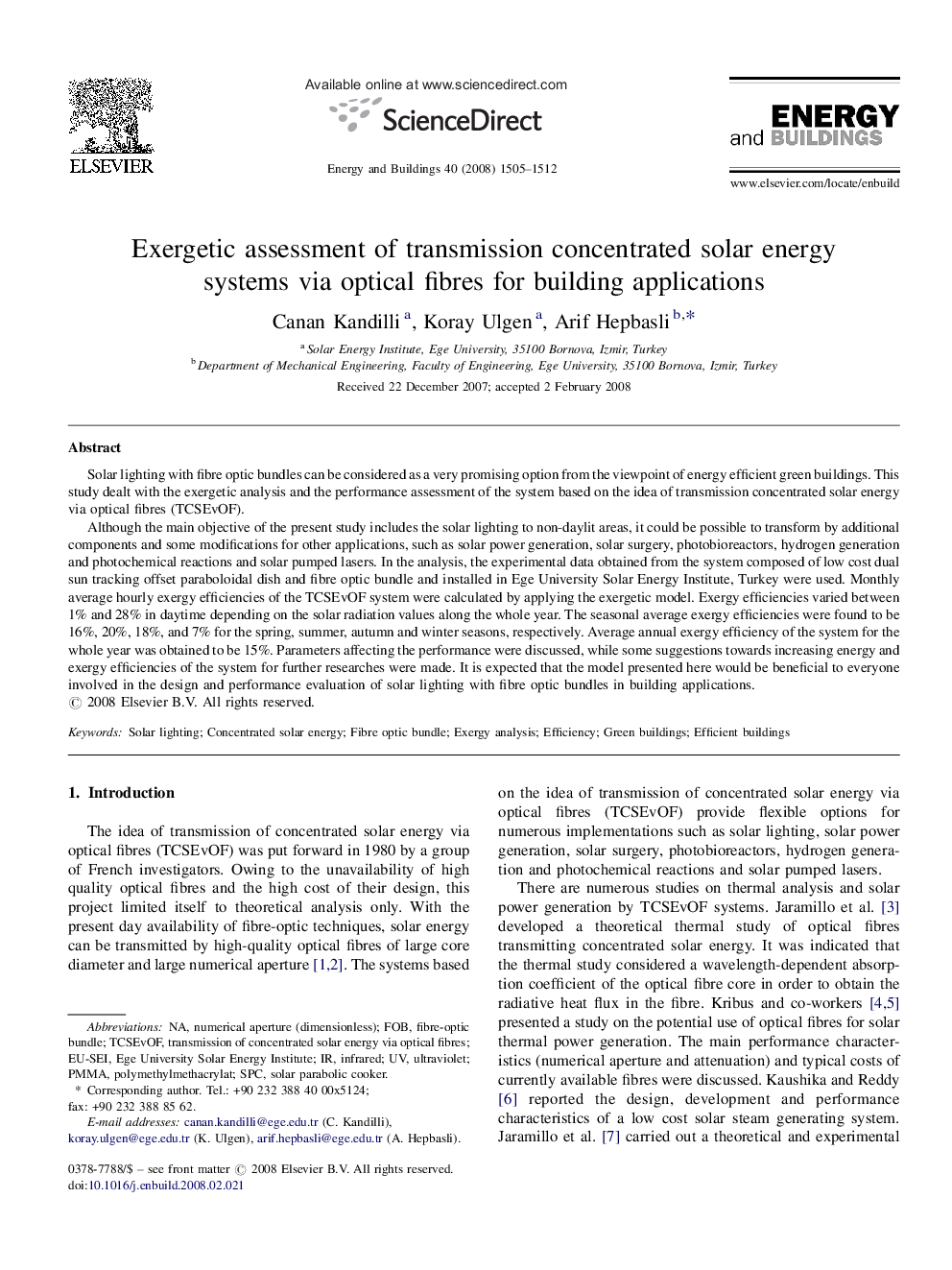| Article ID | Journal | Published Year | Pages | File Type |
|---|---|---|---|---|
| 265461 | Energy and Buildings | 2008 | 8 Pages |
Solar lighting with fibre optic bundles can be considered as a very promising option from the viewpoint of energy efficient green buildings. This study dealt with the exergetic analysis and the performance assessment of the system based on the idea of transmission concentrated solar energy via optical fibres (TCSEvOF).Although the main objective of the present study includes the solar lighting to non-daylit areas, it could be possible to transform by additional components and some modifications for other applications, such as solar power generation, solar surgery, photobioreactors, hydrogen generation and photochemical reactions and solar pumped lasers. In the analysis, the experimental data obtained from the system composed of low cost dual sun tracking offset paraboloidal dish and fibre optic bundle and installed in Ege University Solar Energy Institute, Turkey were used. Monthly average hourly exergy efficiencies of the TCSEvOF system were calculated by applying the exergetic model. Exergy efficiencies varied between 1% and 28% in daytime depending on the solar radiation values along the whole year. The seasonal average exergy efficiencies were found to be 16%, 20%, 18%, and 7% for the spring, summer, autumn and winter seasons, respectively. Average annual exergy efficiency of the system for the whole year was obtained to be 15%. Parameters affecting the performance were discussed, while some suggestions towards increasing energy and exergy efficiencies of the system for further researches were made. It is expected that the model presented here would be beneficial to everyone involved in the design and performance evaluation of solar lighting with fibre optic bundles in building applications.
